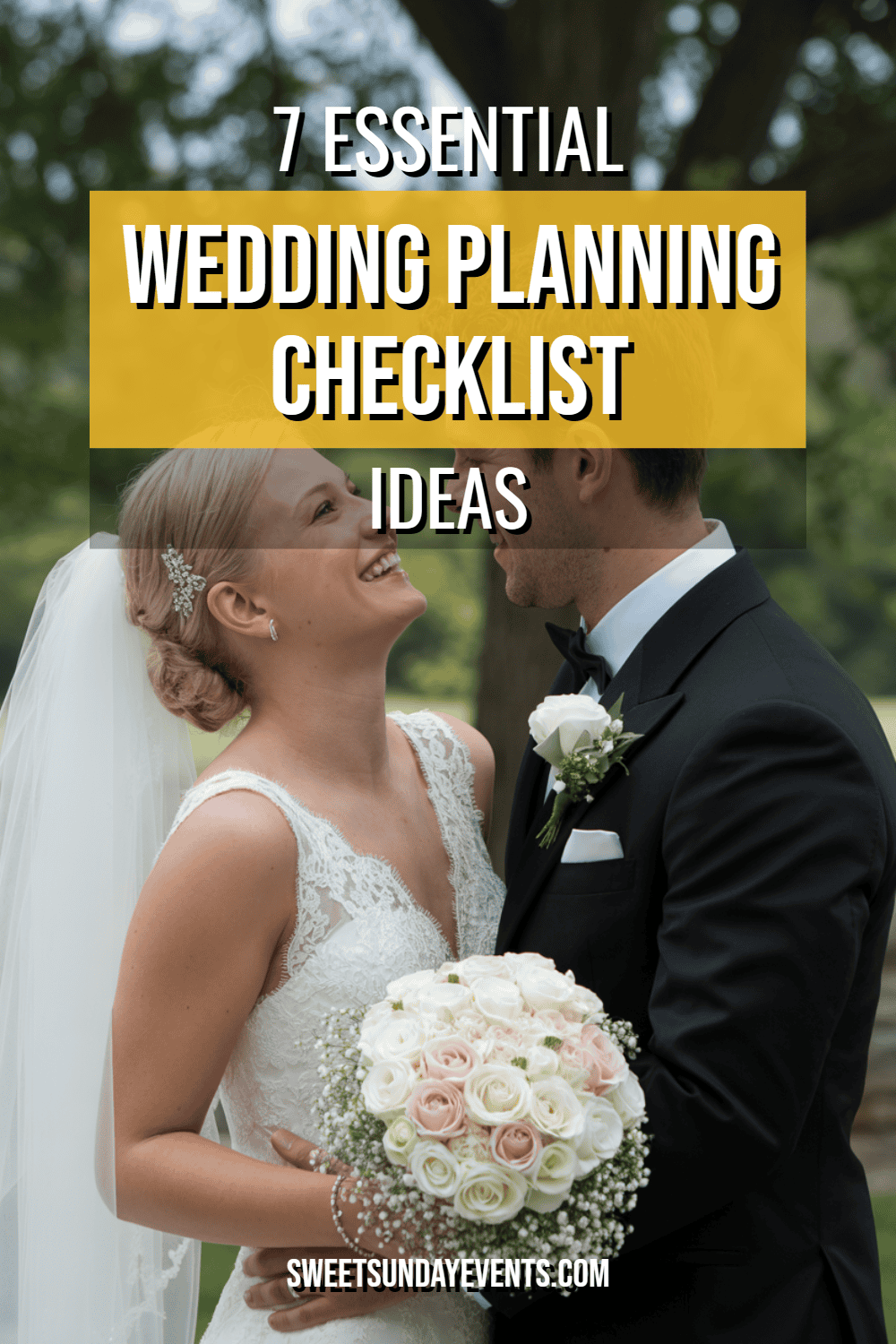Planning a wedding without a solid checklist is like trying to navigate a maze blindfolded while juggling flaming torches.
Trust me, I’ve seen enough brides dissolve into tears over forgotten RSVPs and missing boutonnieres to know that organization isn’t just helpful—it’s your sanity’s best friend.
1. Create Your Master Timeline Early
The backbone of every successful wedding is a timeline that actually makes sense. Start with your wedding date and work backward, marking critical deadlines for everything from venue bookings to dress fittings.
Your master timeline should include both vendor deadlines and personal milestones.
Book your venue and photographer 12-18 months ahead, but don’t panic if you’re working with a shorter timeframe—plenty of couples pull off gorgeous weddings in six months or less.
Break down each month leading up to your big day with specific tasks. Three months out, you should be finalizing your menu and confirming RSVPs. One month before, you’re picking up your dress and having final venue walkthroughs.
The key is being realistic about how long things actually take. Ordering invitations isn’t just about clicking “buy”—you need time for addressing, stuffing, and dealing with the inevitable postal delays that seem to happen at the worst possible moments.
2. Budget Tracking That Actually Works
Forget those Pinterest-perfect budget spreadsheets that make you feel inadequate. Your budget tracker needs to be simple enough that you’ll actually use it when you’re stressed and running on wedding-planning adrenaline.
Start with your total budget and divide it into major categories: venue, catering, photography, attire, flowers, and miscellaneous. The miscellaneous category should be at least 10% of your total—trust me on this one.
| Category | Percentage of Budget | Typical Amount (for $30k wedding) |
|---|---|---|
| Venue & Catering | 45-50% | $13,500-$15,000 |
| Photography | 10-15% | $3,000-$4,500 |
| Attire | 8-10% | $2,400-$3,000 |
| Flowers & Decor | 8-10% | $2,400-$3,000 |
| Music/Entertainment | 8-10% | $2,400-$3,000 |
| Miscellaneous | 10-15% | $3,000-$4,500 |
Track every expense as it happens, not when you remember three weeks later. Keep receipts in one designated folder (physical or digital) and update your tracker weekly.
3. Guest List Management Strategy
Your guest list will change approximately seventeen times before you send invitations. Accept this reality now, and you’ll save yourself considerable frustration later.
Create three lists: must-have guests, would-love-to-have guests, and courtesy invites. Your must-have list should include people you genuinely cannot imagine celebrating without—not people you feel obligated to invite because of family politics.
The would-love-to-have category is your buffer zone. These are folks you’d enjoy having but won’t lose sleep over if budget or venue constraints require cuts.
Courtesy invites are tricky territory—distant relatives, old family friends, or work colleagues who might expect an invitation. Handle these diplomatically but don’t let guilt drive your guest count through the roof.
Keep a master spreadsheet with names, addresses, meal preferences, and RSVP status. Include a notes column for dietary restrictions, plus-ones, and any special considerations like accessibility needs.
4. Vendor Coordination System
Managing multiple vendors without losing your mind requires a system that keeps everyone on the same page. Create a shared document or use a wedding planning app that tracks all vendor contact information, contracts, and deadlines.
Each vendor should have a dedicated folder with their contract, payment schedule, and all correspondence. This might seem obsessive, but when your florist asks about the specific shade of blush you discussed six months ago, you’ll be grateful for the paper trail.
Schedule regular check-ins with key vendors, especially as your date approaches. Your photographer needs to know the final timeline, your caterer needs accurate headcounts, and your DJ needs to understand the vibe you’re going for.
Don’t assume vendors talk to each other—they usually don’t. You’re the central hub of information, so make sure everyone has what they need to do their job well.
5. Dress and Attire Planning
Wedding dress shopping is either a magical experience or a stress-inducing nightmare—sometimes both in the same appointment. Start this process early, but don’t panic if you find “the one” on your first try.
Allow 4-6 months for ordering and alterations, though many dresses can be rushed if needed. Book your first fitting 6-8 weeks before the wedding, with final fittings scheduled for the week before.
Don’t forget about undergarments, shoes, and accessories. Your seamstress needs to see exactly what you’ll be wearing underneath for proper alterations.
Groom’s attire is typically more straightforward but still requires planning. Whether renting or buying, allow time for proper fitting and any necessary adjustments.
Consider the practical aspects of your wedding day. If you’re getting married on a beach, stilettos might not be your best choice. If you’re having an outdoor ceremony in summer, heavy fabrics could leave you wilting before you say “I do.”
6. Day-of Logistics Planning
Your wedding day timeline should be detailed enough that anyone could follow it, but flexible enough to handle the inevitable hiccups. Start with your ceremony time and work backward to determine when hair and makeup should begin.
Build in buffer time between major events. If your ceremony ends at 4 PM, don’t schedule cocktail hour to start at 4:05 PM. Give yourself 15-20 minutes to account for photos, congratulations, and the general chaos of moving people from one location to another.
Assign specific responsibilities to trusted friends or family members. Someone needs to be in charge of getting your bouquet to you before you walk down the aisle. Someone else should handle the rings and any ceremony programs.
Create an emergency kit with safety pins, stain remover, tissues, breath mints, and any medications you might need. Designate someone to be the keeper of this kit—preferably someone who’s naturally organized and won’t disappear during crucial moments.
Pack everything you’ll need the night before, including a change of clothes for after the reception. Your exhausted, slightly tipsy future self will thank you for thinking ahead.
7. Communication and Documentation
Keep all wedding-related communications in one place, whether that’s a dedicated email folder, a planning app, or a physical binder. When vendors start asking about details you discussed months ago, you’ll need to reference previous conversations.
Document decisions as you make them, including the reasoning behind them. When you’re second-guessing your centerpiece choice at 2 AM six weeks before the wedding, you’ll appreciate having notes about why you chose those specific flowers.
Create a communication plan for your wedding party and immediate family. Not everyone needs to be included in every decision, but key people should know how to reach you with questions or concerns.
Set boundaries around wedding talk. Designate certain times or days as wedding-free zones to maintain your sanity and your relationships with loved ones who might be getting a little tired of hearing about napkin colors.
Moving Forward With Confidence
Planning a wedding can feel overwhelming, but breaking it down into manageable pieces makes the process much more enjoyable. These seven essential areas provide the foundation for staying organized and reducing stress throughout your engagement.
The most important thing to remember is that your wedding should reflect you as a couple, not what you think a wedding should look like. Use these checklists as guides, but don’t be afraid to adapt them to fit your specific situation and priorities.
Your wedding day will be beautiful because it’s yours—imperfections, last-minute changes, and all. The planning process is just the beginning of your marriage, so try to enjoy it along the way.


